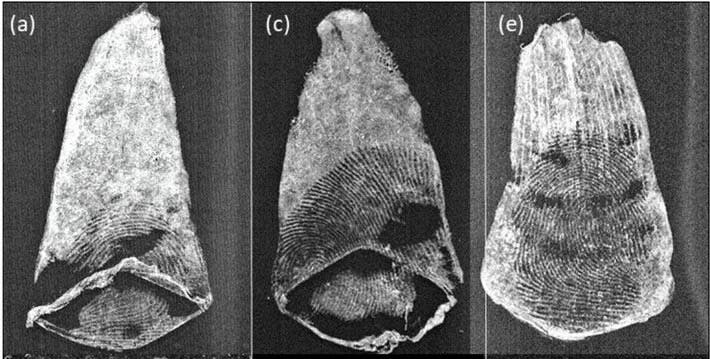The one good thing about the coronavirus pandemic? It might actually save the pangolins.

As China finally starts to take the protection of pangolins seriously, researchers have discovered a new forensic method that could disrupt poachers and traffickers and help them bring them into justice.
A group of wildlife forensic experts from the University of Portsmouth have discovered a way to lift fingerprints from pangolin scales by using gelatin, a common way that forensic scientists pick up prints from surfaces. The lift can be easily applied, removed and scanned and afterward the fingermarks can be graded for ridge detail.
The first trial using this method was done in 2018 and since then it has been further developed with training and workshops in Asia and Africa. Wildlife personnel worked with the researchers to improve their capability in using the methods that are most suitable in their areas and circumstances.
“We found that wildlife crime officers across Africa and Asia have extensive expertise and knowledge in relation to the wildlife, the crimes committed and the behavior of the traffickers, but they had little experience of forensic methods and practice,” said in a statement Brian Chappell, co-author of the study.
Gelatin is essentially a soft material that picks up almost anything left on a surface. That’s why it has been used in forensics science for over a century. By pressing a sheet of gelatin onto the surface, the gel adheres to the surface and picks up fingerprint impressions.
That’s true whether the surface is a table, a glass, or a pangolin scale. The gel also picks up other substances apart from fingerprints, such as soil and pollen, which could give scientists more information into where the pangolins are being traded. That’s why using gel is better than dusting for fingerprints, despite what you may see on popular tv shows.
Dr Paul Smith, co-author of the study, said in a statement: “The low-tack adhesive gelatine lifters have been used in crime scene and forensic practice for over 100 years, but we adapted bespoke packs and lifted evidence successfully off pangolin scales. This technique was easy to use, effective and suitable for practice.”
Beyond pangolin scales, the method could even be used for other smooth surfaces, like ivory tusks, according to the researchers. At the same time, using gelatin could also help keep people safe when they are tracking down poachers. It’s low-tech, easy to use, and allows wildlife rangers to quickly get in and out of a scene.
That’s important because illegal wildlife trade is a dangerous activity, especially for those who are trying to stop it. A 2018 study found that more than 100 wildlife rangers died in the line of work in just one year. Of those deaths, 48 people were murdered while working.
The study was published in the journal Forensic Science International.
Pangolins under challenge
Pangolins are a highly endangered species as they are valued for their meat and scales.. They are often considered the most endangered species in the world.
The humble pangolin is a scale-covered insectivore, highly valued in Asia and some parts of Africa for its scales and meat. The pangolin’s main defense strategy is to curl up into a ball and use its scales for protection — which renders it completely powerless against poachers. There are eight different pangolin species found in Asia and Africa.
Pangolin scales are made of keratin and their use is promoted by traditional Chinese medicine. It is believed that they improve blood circulation and reduce inflammation, although the scientific evidence is lacking. Last year alone, more than 130 tons of pangolin related products were seized by the government, which represents up to 400,000 animals — and that’s just what was captured.
Pangolins have been in the spotlight since the start of the coronavirus pandemic, as studies have suggested they may have been the intermediate host that transmitted the virus to humans. Nevertheless, no positive identification was obtained yet, with experts suggesting a 100% identification will be difficult.
The latest edition of the Chinese Pharmacopoeia, a government compendium of Chinese and Western medicine, doesn’t include pangolin scales on its list of approved ingredients anymore. The decision was explained by the government due to “wild resources exhaustion.”





